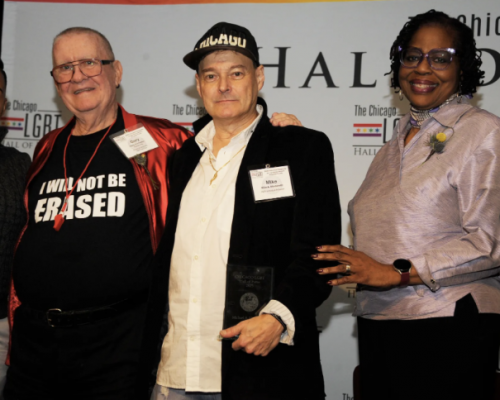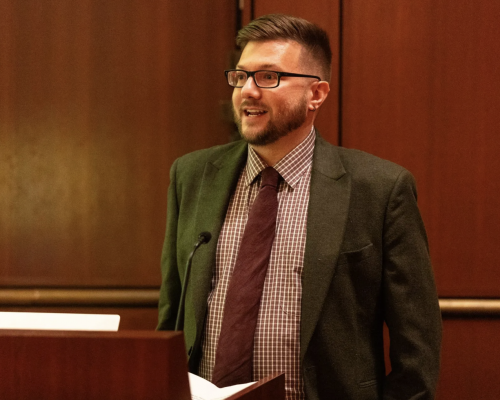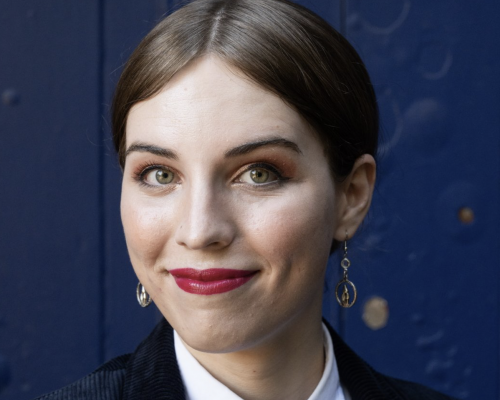by David Webb
Staff size and breakdown: managing editor, entertainment editor, art director, 2 graphic artists, 5 photographers, and 8 contributors.
Physical dimensions of publication/Average page count: The magazine is 8 ½” x 11” high gloss, 24-48 pages
Area of coverage: Metro Detroit
Key demographics for readers: 75 percent male, 25–54
Median age of readers: 36
Print run: 5,000
*****
PPQ: When did you launch your publication, and what inspired you to do it?
 Publisher Peter Rayes: During my previous employ with some of Detroit’s local entertainment guides, I was often disappointed at how many business decisions were made on the basis of the status quo. When I went to the publishers with some amazing opportunities, they were everything less than receptive. Naturally, I did what any other 24-year-old would do: I set out a business plan, hired 12 of the brightest professionals in the community, and published and distributed Michigan’s only LGBT lifestyle and entertainment magazine. The initial issue, released in January 2012, met with rave reviews at LGBT-friendly locations across Michigan, including bars, bookstores, cafes, restaurants, and health clubs.
Publisher Peter Rayes: During my previous employ with some of Detroit’s local entertainment guides, I was often disappointed at how many business decisions were made on the basis of the status quo. When I went to the publishers with some amazing opportunities, they were everything less than receptive. Naturally, I did what any other 24-year-old would do: I set out a business plan, hired 12 of the brightest professionals in the community, and published and distributed Michigan’s only LGBT lifestyle and entertainment magazine. The initial issue, released in January 2012, met with rave reviews at LGBT-friendly locations across Michigan, including bars, bookstores, cafes, restaurants, and health clubs.PPQ: What, if anything, distinguishes your publication from other LGBT newspapers, magazines and online publications, and how much competition is there in your area for LGBT-specific news and advertising?
Rayes: When I entered the market, there were three existing entertainment guides, a newspaper, as well as a recently announced newsmagazine. Today, we share the market with one newspaper, one entertainment guide, and one [other publication]. With the launch of our mobile app this month, Flame becomes Michigan’s only entertainment magazine with cutting edge graphics and printing, a professional and easy-to-navigate website, a state of the art mobile application, and a strong social media presence.
PPQ: What was the inspiration for the name, Flame?
Rayes: Flame comes from the idea that a small spark (our idea) could build into a community’s highly sought-after source of heat (our Flame). There was a lot of feedback that Flame wouldn’t survive the market, and that was very much possible. We chose to build on the idea that our readership was our most valuable asset, meaning the amount the community chose to fuel and fan the Flame would decide our fate. Detroit chose to keep the flame burning.
PPQ: What were your greatest challenges in getting it up and running?
Rayes: The most difficult thing in entering a market with three existing entertainment guides, a newspaper, and a newsmagazine was to be taken seriously by our colleagues as well as our advertisers. It was interesting to see that while a group of 20somethings appealed to the community and began building an impressive readership immediately, we’re still battling the idea that our age is somehow reflective of our abilities. Additionally, being the new guy in town is always a difficult order. My team and I are faced with the quotidian struggle of proving our competency to business owners around the state.
PPQ: Is it successful now and how do you gauge that?
Rayes: The answer is simple: numbers. At the end of the day, I am a businessman. While I give everyone that is a part of Flame plenty of leeway through creative license, I do have to make some tactical or operational decisions that not everyone is always happy with. Overall, when considering the many different facets of success in this business, I think I can gauge it best by looking at how well our readership outreach initiatives have done, how many businesses and organizations are now willing to work with us, and how much potential for growth we still have.
PPQ: Have you experienced significant changes in publication size, and when did you see that occurring?
Rayes: We haven’t. We’re currently looking into feedback requesting a more recurring print issue. Whereas Flame Magazine will continue to be published monthly in its current format, an additional, smaller entertainment guide, Flame Nightlife, may be introduced to the market soon.
PPQ: Are you facing new challenges and what are they?
Rayes: We minimize our challenges by staying true to our vision. We highlight local members of the community and their endeavors only in a positive light. I use my time with advertisers only to build on how to continue promoting the community and our relationships. No gossip. No drama. No exceptions.
PPQ: How does the publication differ now from its original inception, and what is the most popular feature?
Rayes: To build a brand, we’ve essentially kept Flame true to its original concept. The magazine has a commitment to be a platform to profile LGBT individuals, companies, and organizations representing a positive and refreshing vision in the community. My mission was to promote the concept of community by building something that would become for the gay community, by the gay community. I think the application of having a feature instead of an array of super good-looking young men and women (like ourselves) on the cover has really set us apart. Flame is truly the only real magazine with hearty content and editorials in this region.
PPQ: What advice do you have for others working in LGBT media?
Rayes: This is a tough but enjoyable industry. While you’re having fun, pay heed to the changes happening around you. Your readership is the most valuable asset you have. As you change or grow, don’t relinquish your print readership for web or mobile development, but don’t lose potential readership gain by falling obsequious to status quo. And don’t be threatened by the idea of competition. With a community as colorful as ours, there’s always something for everyone. If you can identify something that is missing, create it and tap into that segment of the market.
Volume 15
Issue 6
PRESSING QUESTIONS
 Publisher Peter Rayes: During my previous employ with some of Detroit’s local entertainment guides, I was often disappointed at how many business decisions were made on the basis of the status quo. When I went to the publishers with some amazing opportunities, they were everything less than receptive. Naturally, I did what any other 24-year-old would do: I set out a business plan, hired 12 of the brightest professionals in the community, and published and distributed Michigan’s only LGBT lifestyle and entertainment magazine. The initial issue, released in January 2012, met with rave reviews at LGBT-friendly locations across Michigan, including bars, bookstores, cafes, restaurants, and health clubs.
Publisher Peter Rayes: During my previous employ with some of Detroit’s local entertainment guides, I was often disappointed at how many business decisions were made on the basis of the status quo. When I went to the publishers with some amazing opportunities, they were everything less than receptive. Naturally, I did what any other 24-year-old would do: I set out a business plan, hired 12 of the brightest professionals in the community, and published and distributed Michigan’s only LGBT lifestyle and entertainment magazine. The initial issue, released in January 2012, met with rave reviews at LGBT-friendly locations across Michigan, including bars, bookstores, cafes, restaurants, and health clubs.





